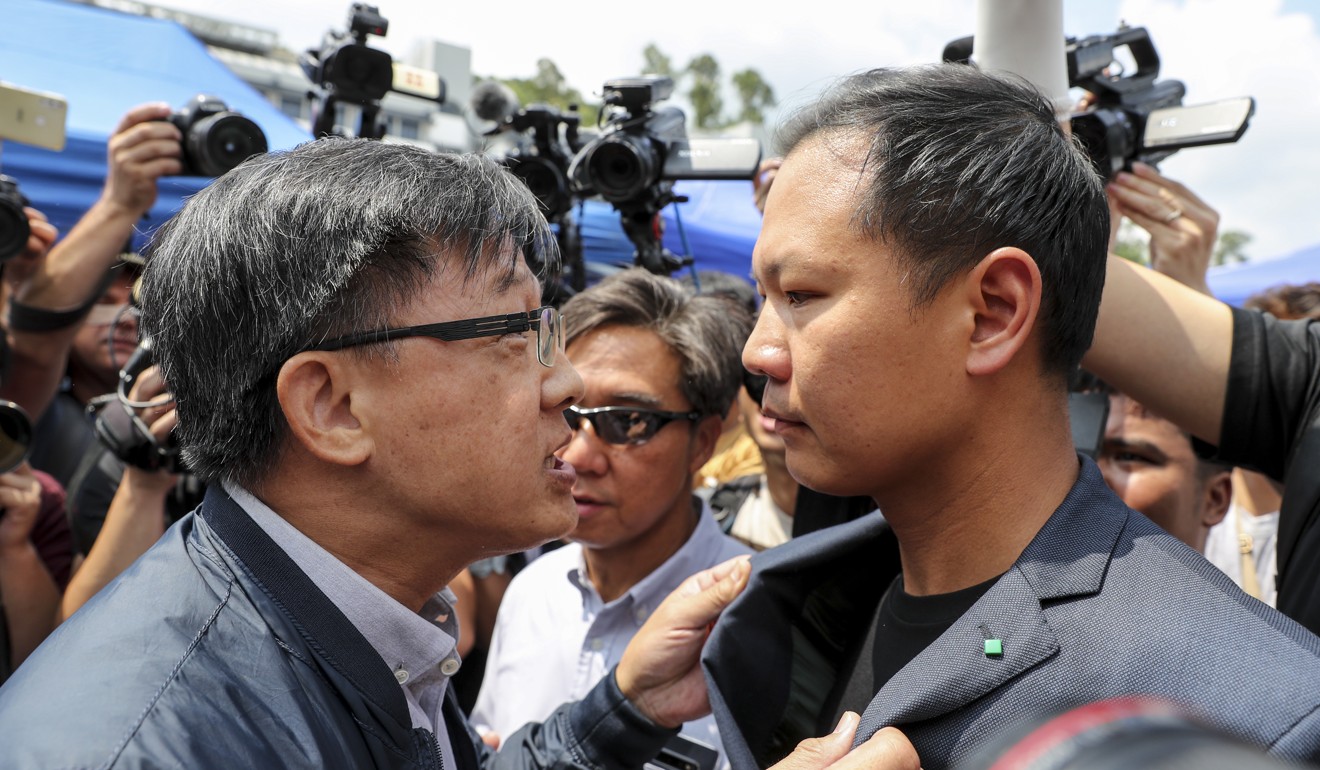
As anti-government protests rumble on, Hong Kong police showcase water cannon trucks
- The vehicles are ready for deployment on city streets, source says
- Police Tactical Unit commander says using force not his officers’ first resort for crowd dispersal
Hong Kong police showed off controversial new anti-riot vehicles on Monday, as angry protests continued to grip the city.
The custom-built French trucks were ready to hit the city streets, a police source said.
Nineteen lawmakers from the legislature’s security panel were at the Police Tactical Unit base in Fanling when officers demonstrated the vehicles’ use.
The force has recently dealt with weeks of public order incidents, as anti-government protesters have occupied roads and besieged police stations in a wave of actions sparked by anger at the now-abandoned extradition legislation.
Officers at the base on Monday used the cannons on dummies at the lowest and highest pressures, from distances of between 20 and 40 metres.
Asked whether the vehicles were ready for deployment, the unit’s deputy commander, Chan Kin-kwok, said it was hard to say, adding that it “depends on the situation”.
A police source said they were ready for deployment.
Chan said using force would not be his officers’ first resort for crowd dispersal, and that police understood the effect high-pressure cannons would have on people.
After woman shot in eye, angry Hongkongers descend on airport
“Every trained police officer here has personally tested different pressures and different distances. We ought to be cognisant of how impactful the vehicles are,” the senior superintendent said.

He said the cannons would only be aimed at protesters’ lower limbs, in accordance with guidelines.
“We only target people violently charging against us, not particular individuals. We will stop using the weapons after achieving our aims,” he said.
Before the demonstration, pan-democrat legislators protested at the scene, accusing police of using excessive force when dealing with protesters on Sunday.
The question and answer session was also cut short after pro-democracy legislators got into an argument with controversial pro-Beijing lawmaker Junius Ho Kwan-yiu.

Costing a total of HK$16.59 million (US$2.12 million), the Mercedes-Benz vehicles – which carry seven cameras each – arrived in the city in May last year.
The vehicles each boast 15 high-pressure cannons. Tender documents show two cannons on the roof can fire more than 1,200 litres of water a minute over a distance of 50 metres. The water can be mixed with tear gas, or liquid dye that would allow police to identify protesters after they disperse.
Human rights groups and some legislators have raised concerns over the potentially fatal weapons. A South Korean farmer was seriously injured during a protest in 2015 when a police water cannon knocked him off his feet, causing him to smash his head on the road. He later died.

In a 2015 study, local police monitoring group Civil Rights Observer said the water jets could deliver 145kg of force from a distance of five metres and 127kg from 10 metres.
Amnesty International warned in a statement last week that the use of armoured cars in the city’s densely populated streets could cause serious injuries and further inflame tensions.
“Water cannons are not a toy for the Hong Kong police to deploy as a sign of strength … This equipment can knock a person over, push them into fixed objects, cause permanent loss of sight, or pick up loose objects and propel them as missiles. In Hong Kong’s crowded streets, their deployment could be a recipe for disaster,” said Man-kei Tam, director of Amnesty International Hong Kong.
The assistant commissioner of police overseeing operations could authorise the vehicles’ deployment, following a threat assessment. The guidelines also state any use should be in line with the Police General Orders governing the use of force by officers.
Peaceful protests against the extradition legislation, which would allow the transfer of fugitives to jurisdictions Hong Kong lacks a formal agreement with, including mainland China, have often descended into violent clashes with police.
Officers have used tear gas, rubber bullets, beanbag rounds, sponge grenades and pepper spray to try and disperse radical protesters occupying roads overnight, with mixed results.
Police proposed buying the cannons in the government’s annual budget announced in February 2015, two months after the 79-day pro-democracy Occupy protests ended.

